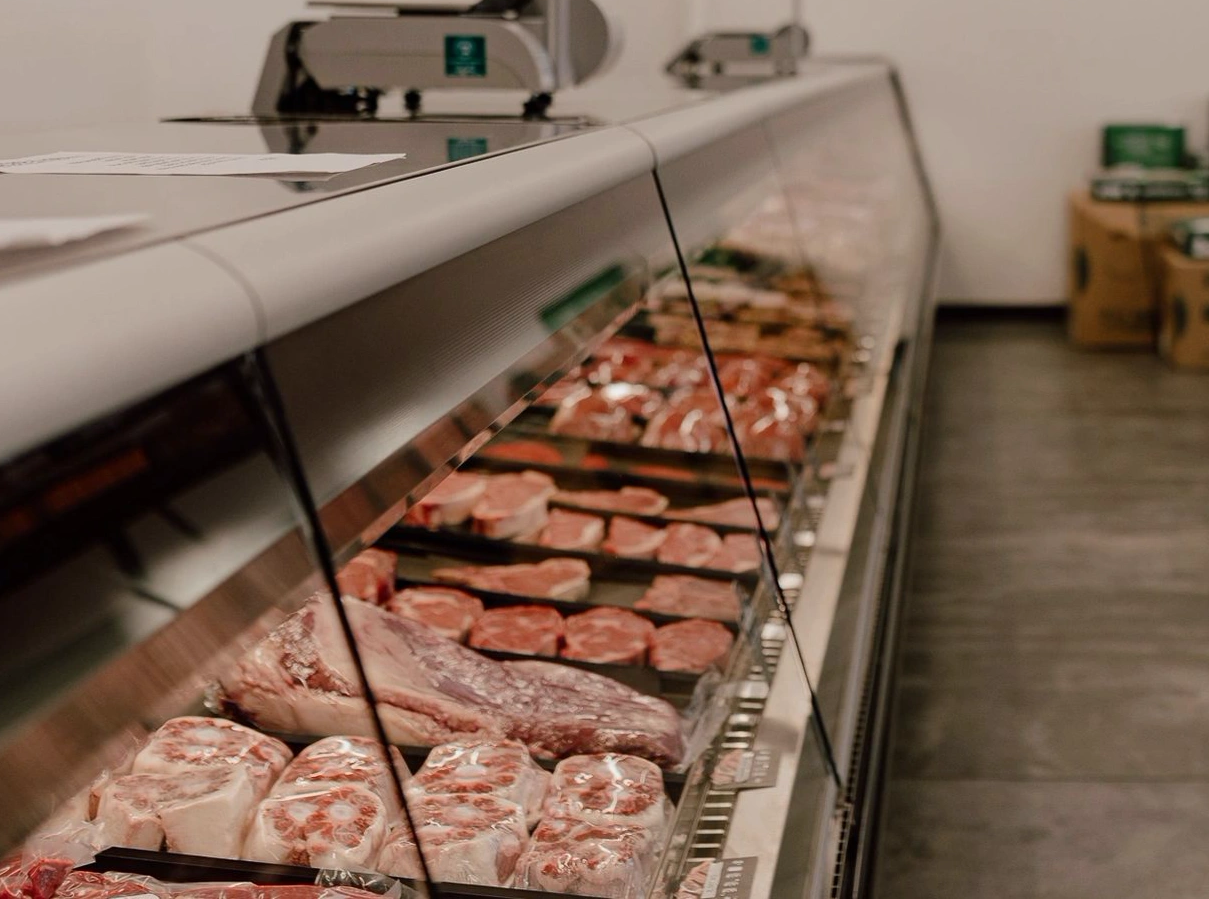Why Locals Love Bagley Farms Meat Market Edwardsville IL for Their Meat Shopping
Why Locals Love Bagley Farms Meat Market Edwardsville IL for Their Meat Shopping
Blog Article
Discover the Art of the Butcher's Cut in a Modern Meat Market
In the ever-evolving landscape of modern-day meat markets, the butcher's cut has transcended its traditional origins, merging olden craftsmanship with contemporary techniques. What really establishes the contemporary butcher apart is their capacity to forge a much deeper link between customers and the origins of their meat.
Development of Butchery Strategies

The mid-20th century saw butchery techniques further refined by scientific understandings right into muscle mass biology and meat aging, improving both tenderness and taste. Innovations like vacuum cleaner product packaging and refrigeration prolonged product shelf-life, permitting butchers to expand offerings and boost high quality control. This period additionally noted the increase of specialized equipment, such as band saws and meat slicers, which increased accuracy and effectiveness in meat processing.
Computerized systems currently aid in tracking pet provenance and optimizing cuts to fulfill particular consumer preferences. In addition, a resurgence in artisanal butchery has arised, blending typical abilities with modern knowledge to cater to consumers seeking ethical and lasting meat options.

Recognizing Meat Cuts

Recognizing the intricacies of meat cuts is vital for both butchers and customers seeking quality and value. For butchers, accurate cuts show ability and respect for the craft, making sure marginal waste and optimum yield.
The key classifications of meat cuts include primitive, sub-primal, and retail cuts. Butchers after that break these down better right into sub-primal cuts, prior to finally creating retail cuts offered to consumers, like ribeye or tenderloin.
Recognizing muscular tissue structure is crucial; muscular tissues used much more often by the pet have a tendency to be harder and are best suited for sluggish cooking methods, while less-used muscle mass, like those found in the loin, are much more tender and suitable for grilling or roasting. Experience with these differences equips customers to make educated choices, boosting their culinary ventures.
Selecting Quality Meat
Choosing the right meat entails more than simply selecting a visually appealing piece from the screen. The art of selecting quality meat needs a discerning eye and expertise of details characteristics that indicate quality and excellence.
Second of all, take into consideration the marbling, which refers to the white flecks of fat within the muscle mass. Appropriate marbling is a vital indication of tenderness and flavor, as it melts helpful hints during food preparation, boosting the meat's juiciness. Bear in mind, higher marbling typically associates with superior quality cuts, such as USDA Prime.
Texture is one more vital aspect; meat should really feel firm to the touch, not slimed or excessively soft. Additionally, bear in mind the scent. Fresh meat ought to have a tidy, neutral odor, devoid of any type of sour or repulsive odors.
Coupling Cuts With Cooking Approaches
Effectively matching cuts of meat with the ideal cooking techniques is essential for attaining ideal taste and structure. These methods enhance the meat's all-natural flavors and make certain a juicy surface.
Alternatively, harder cuts like brisket and chuck roast are abundant in collagen, which damages down right into jelly when prepared slowly. These cuts are excellent for braising or slow-moving roasting, permitting the meat to tenderize over time and develop deep, complex flavors. In a similar way, cuts such as brief ribs and pork shoulder fare well with slow-cooking methods, where expanded cooking times transform their robust textures right into succulent recipes.
Lamb shanks and oxtail, which call for extended food preparation to soften, are best candidates for cooking or slow simmering. These methods coax out abundant, hearty flavors while maintaining dampness. By comprehending the one-of-a-kind characteristics of each cut, cooks and home chefs alike can raise their culinary productions, ensuring each meal is both pleasing and memorable.
The Butcher's Duty Today
Browsing the advancing landscape of the modern meat market, the butcher's duty today expands past mere preparation of cuts. Contemporary butchers are culinary craftsmens, teachers, and supporters for lasting techniques. They bridge the space between the farm and the fork by making certain ethical sourcing, recognizing animal husbandry, and prioritizing openness in the supply chain. This change reflects the growing customer demand for top quality over quantity, where provenance and pet welfare are extremely important.
Along with crafting accurate cuts, butchers now involve straight with customers, supplying cooking advice and customizing choices to suit individual requirements and preferences. Their competence in meat aging, marbling, and flavor profiles equips customers to make educated decisions, improving their culinary experiences. This personalized service exhibits the butcher's progressing function as a Website relied on consultant in the kitchen area.
In addition, butchers are pivotal in lessening waste, using entire animals to create varied products such as sausages and stocks - bagley farms meat market edwardsville il. This comprehensive approach not only appreciates the pet but additionally straightens with modern sustainability goals. This way, the contemporary butcher personifies both tradition and advancement, adjusting to an ever-changing market while protecting the artistry and integrity of their craft

Conclusion
Mastery in understanding diverse meat cuts and quality indications empowers butchers pop over to this site to provide enlightened referrals, aligning particular cuts with optimum food preparation approaches. By honoring historic techniques while welcoming contemporary demands, the butcher's duty stays vital in today's advanced meat market.
Report this page